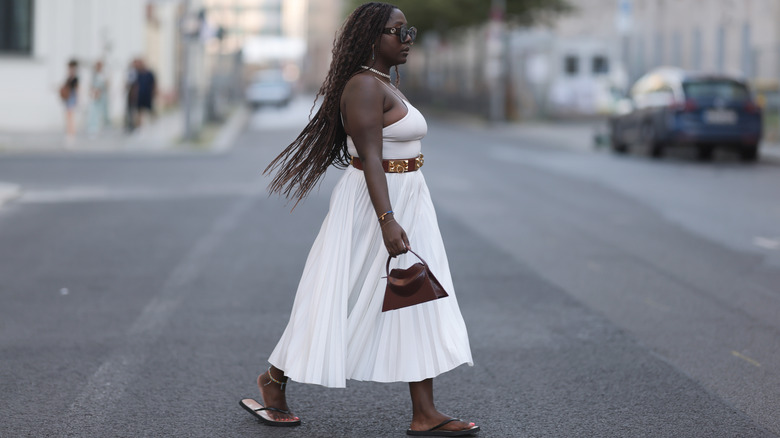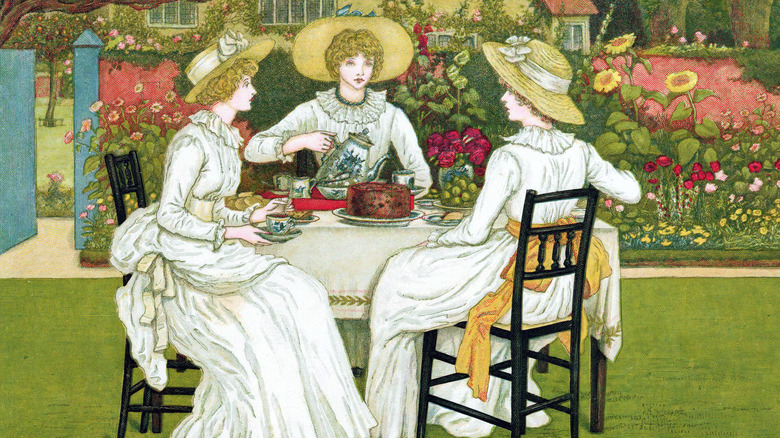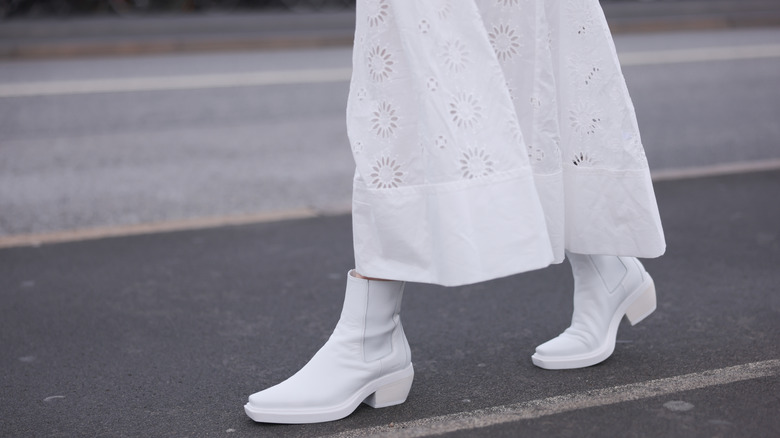The Long-Standing 'No White After Labor Day' Fashion Rule, Explained
While rules were definitely made to be broken (and fashion has proven that time and again) there is still something foundational about the rule to never wear white after Labor Day. The rule is that, from Memorial Day to Labor Day, white is acceptable, welcomed, and even encouraged in your summer wardrobe. However, after Labor Day, whites should be completely retired, shunned, and hidden away until summer comes back around. While it might seem silly to banish an entire color from your wardrobe for 75% of the year, the no-white rule has somehow persisted for a lot of people in the US.
Even while most Americans are willing to break fashion rules and expectations, many still relegate whites to the summer months. This begs the question: Where did this no-white rule even come from? Many signs point to the creation of Labor Day (which is the first Monday of September in the US), which officially became a federal holiday in 1894 and unofficially became known as the end of summer. This endpoint to summer fun created not only a change in the way society viewed seasonal change, but also created a specific delineation line for fashion. Whether you strictly adhere to the no-white rule or enjoy thumbing your nose at tradition, let's dive into the original no-white after Labor Day fashion rule and see if it really still applies today.
The no-white rule origin story
Valerie Steele, the director of the Museum at the Fashion Institute of Technology told Newsweek that classism was definitely part of the formation of the no-white rule, "It [was] insiders trying to keep other people out and outsiders trying to climb in by proving they know the rules." The theory goes that old money elites, who were upset by changes in social mobility, instituted the no-white rule as a way to hold themselves apart from the newly rich, non-generationally wealthy growing middle class of the time. Elites believed that the nouveau rich social climbers wouldn't know the rule because they didn't belong to the same "class".
There's also a practical element to the no-white rule, namely that white can be difficult to wear, especially in any kind of weather. Given that the fashion publications (aka editors who could and did disseminate these kinds of fashion rules) and the who's who of the fashion world were located in big cities that, geographically, dealt with seasons, it's practical that they would switch back to darker colors for fall. Who among us doesn't love a separate vacation-specific wardrobe? Or, similarly, a new fall wardrobe? It is also possible that the white rule was simply born from the practical reality of having to return to real life after summer vacation. Steele elaborated, "You're back in the city, back at school, back doing whatever you're doing in the fall — and so you have a new wardrobe."
Does the no-white rule still apply?
Obviously not. Even Vogue has given in on wearing white after Labor Day. While classist origins might have created the rule, modern society has mostly moved away from these strict class-based dress codes (don't get us started on stealth wealth, please). Fashion icons, celebrities, magazines, and even fashion week attendees all break the white rule on a regular basis (speaking of which: NYFW is almost here). Even Coco Chanel made white a year-round staple in her collections starting in the 1920s.
It might also interest you to know that throughout most of Europe, the no-white rule simply does not exist. This strange sartorial tradition seems to be a mostly American one. While white is still definitely seen as a predominantly summer color throughout Europe, with linen and seersucker worn liberally in the hot months, there does not seem to be any kind of specific no-white rule in place culturally the way there is/was in the US. With that being said, it's hard to know how much of an impact or influence American fashion houses and rules might have had on Europeans throughout the 20th Century, or vice versa. All we can know for sure is that, in 2023, the best rule of thumb is to wear white whenever the hell you want to.


